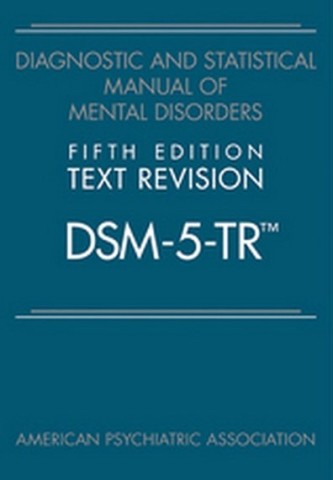
The DSM-5 (2013) and its update, the DSM-5-TR (2022), associate severity ratings with a diagnosis of Autism Spectrum Disorder. The DSM-5 and the newer DSM-5-TR treat severity ratings for autism/ASD differently.
A challenge with severity ratings in an autism diagnosis is that the rating scale is too vague. Level 1 means "Requiring support" while Level 3 means "Requiring very substantial support". But interpretations vary: some people think an autistic person who needs help with hygiene every time they use the toilet does not need "very substantial support" when they know autistic people who don't use the toilet at all. Others feel that an autistic person who fails to remain in a job for more than 6 months requires "very substantial support" to accommodate them in a work place. Interpretations vary widely as to what autism severity ratings mean, even among experienced clinicians ... which is presumably why the DSM-5 says "severity categories should not be used to determine eligibility for and provision of services".
The autism spectrum is very poorly understood.
The DSM-5-TR uses a single severity rating for all parts of an ASD diagnosis.
| Level | meaning |
1 | need support |
2 | needs substantial support |
3 | needs very substantial support |
The previous DSM-5 autism diagnosis has two severity ratings, not just one. it asked that a severity rating must be specified for each of Part A and Part B of the diagnostic criteria.
At a meeting some time ago, the NDIA CEO and the Board Chair told A4’s Convenor, Mr Bob Buckley that:
- when the NDIS is given a diagnostic report with two severity ratings, they take the higher of the two as the value they recorded for the participants; and
- the NDIA would change its computer systems to capture the two severity levels as well as the other information that is part of the DSM-5 (at the time) ASD diagnosis report.
The NDIA did not make these changes to its computer systems.
Other information in a complete DSM-5-TR (or DSM-5) ASD diagnosis report includes:
- with/without intellectual impairment
- with/without language impairment
- and several other items
The NDIA’s computer system can record a secondary disability that could be recorded as Intellectual Disability … but the Scheme Actuary reports that the information held in this field in the database is unreliable and inconsistent. Published data from the NDIA suggests there are few if any records of “with language impairment” associated with autistic participants despite many of them reporting they are non-verbal.
A major concern from the a largely ignored part of the autism sector is that the way that the NDIA records ASD severity means that the autistic NDIS participants with the most severe presentations, ASD Levels 3/3 with both intellectual and language impairment, are hidden among participants with significantly less severe ASD presentations.
The NDIA has been challenged on this issue on multiple occasions but it chooses to ignore it; it refuses to act. In this way, its managers wilfully ignore many serious needs of the most severely autistic participants, some of the people the NDIS was most intended to help.
The NDIA targets some of the most vulnerable young NDIS participants through its extremely cruel ABA policy - see https://a4.org.au/node/2567. This NDIA policy targets recently-diagnosed children with the most severe autism often before their parents come to properly appreciate the challenges they face in trying to understand their child and advocate effectively for their child’s support needs. The NDIA and the AAT need to substantially improve their attitudes and approach to the autism sector. The disrespect and contempt that both currently show to autistic Australians, their carers, specialist clinicians and disability advocates is utterly unacceptable.
The NDIA relies increasingly on automated systems to develop Statements of Participant Support, that are the bases for participants’ NDIS Plans. This means the NDIA increasingly relies on incomplete and often misleading information in its plan development process. The result is increasingly inappropriate NDIS Plans for autistic NDIS participants, which increases support cost in the long-run - the NDIA’s own approach to autism supports undermines Scheme sustainability.
The NDIA’s persistent use of PEDI-CAT assessments for autistic NDIS participants, when they have been repeatedly chastised for this practice, is another example. Clearly, the NDIS does not listen to evidence-based advice and certainly does not act on it. The NDIA’s management does not achieve effective continuous improvement.
The NDIA could conduct a small experiment to assess whether data from ASD diagnoses might be more helpful than the PEDI-CAT assessments that it currently uses.
The NDIA has expressed concern about the quality of ASD diagnoses, yet it does nothing to improve the quality. The NDIA could easily improve the quality of ASD diagnoses in Australia. It could easily contact any clinician who provides a substandard ASD diagnosis, such as required items missing from the diagnosis report, by insisting on a complete report from clinicians. It could easily record the date of diagnosis to report on where in the country diagnoses are delayed. It could work with the autism sector on improving severity ratings and progress measures. It could consider how its data can inform programs to improve support advice and decisions.
The clear conclusion from this is that the government and the NDIA don't want to improve outcomes for autistic Australians. Instead, they want proposed changes to the NDIS legislation that will remove many autistic Australians from the NDIS which leaves them with nowhere to go for essential support. The federal government’s excuse is that they want the state/territory governments to support autistic Australians despite the overwhelming evidence that the state/territory governments have never succeeded in providing adequate services and supports for their autistic citizens. It is not enough that all state/territory governments fail to deliver education and health services for autistic Australians; the preferred model is that autistic Australians should be denied the NDIS, which despite many failings is often the best available option for them.
The NDIS would do far better if it:
worked with autistic people (and those with lived experience), researchers, and clinicians to develop more objective severity ratings to help administer services and supports; and
properly recorded autism data then, together with the autism sector, analysed the collected data to inform and improve policy, programs and supports for autistic NDIS participants.
Bob Buckley, A4 Convenor
